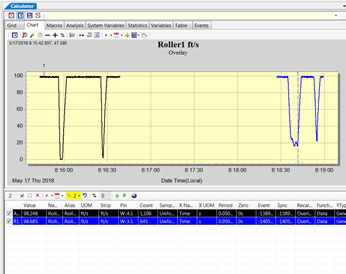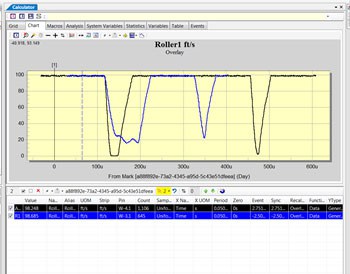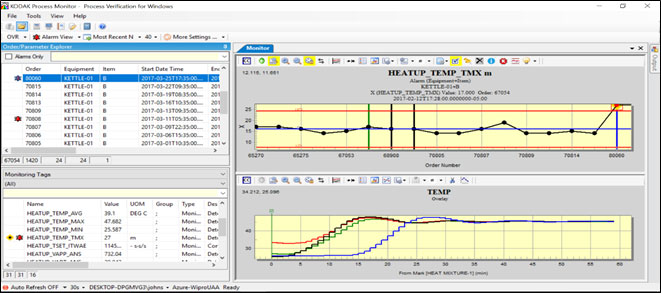Process Development, Scale-Up and Optimization
Process Development
Optimation helps clients develop innovative manufacturing processes. Our team can work with a production developer and turn their process concept or patented process into an operational unit. Optimation eases the pressure of a new process or scale-up bringing the expertise of our process, mechanical, E/I, chemical and controls engineers and designers to the table, helping you with process development. We specialize in development for first-of-a-kind production processes.
Scale-Up and Optimization
We bridge the gap from your pilot process to scale-up and full manufacturing capability – engineering, designing and building a full-scale process tailored to your specs. This can involve a re-design of your process, utilizing custom equipment and/or off-the-shelf components. We aren’t equipment suppliers; we engineer an optimized production process that meets your requirements.
Managing Risk
With new process development comes increased risk. Optimation lowers this risk – our process engineers, technicians, and skilled tradesmen have the process knowledge you need to understand critical constraints.
Process Verification
Manufacturers across different industries share the same fundamental manufacturing challenges. They are concerned about maximizing yield and product quality, minimizing energy consumption and run-to-run variability at each site and across different production plants. Dealing with multiple plant operations can be challenging because of differences in systems, processes, business definitions, and equipment.
Imagine being able to:
- Display increased process variability before products are negatively affected.
- Summarize massive and complex data to an actionable data subset.
- Improve quality and reduce waste.
- If process variability is worth monitoring, it needs to be measured.
Enter Process Monitor
Process Monitor is a powerful shop floor tool to identify and quantify process and product variability. The tool allows for Order-based viewing and analysis to complement the more typical date/time schema. This focuses users on run to run variability for any combination of products, processes or equipment.
The Process Monitor toolset provides powerful calculating functions, statistical process control charts, user generated analysis scripts and modeling functions to visualize the process and to guide users investigating the root causes of variability, machine breakdowns, and waste.
The internal alignment of time series data to critical functional blocks allows visualization of variability in repeat runs. The analysis function allows users to capture key features of the order aligned time series (noise level, patterns, etc.) and convert them to order based scalar values appropriate for control charts.
Advanced users can utilize advanced data analytics including Multivariate algorithms to view variability across all control charts and to correlate to product quality response variables.
Paper: Evaluation of Process and Product Variability


Much of the time it takes to analyze data comes from the data preparation itself. Converting data from what you see on the left to what you see on the right, would normally take a lot of time, and even more time to automate this process. With Process Monitor, you can see the before and after comparison with one click. Once you’ve done this, you can you can automate and compare across all batches.
Consulting Services to Use and Interpret the Data Collected
All the data in the world will do nothing for your process or product if you don’t know how to use it or have the time to interpret it. Capitalize on the full potential of Process Monitor by working with a systems integrator like Optimation.
Optimation can help you:
- Perform an analysis of the variables and get to a problem solution.
- Compare raw data to shed light on problems – these problems are often easy to fix, once the variability is identified
- Automate data collection and reporting.
- Compare operations and products in multiple plants with cloud-based data analysis.
- We give you the tools and teach you how to use them
- Once you obtain Process Monitor and work with Optimation to implement it, you’ll become completely self-sufficient at your own manufacturing process.
Examples of How Process Monitor Can Work
- Process Monitor was one of the methods that enabled Eastman Kodak Company to manufacture high quality and consistently uniform chemicals, dyes, and emulsions in plants operating in five different continents.
- It is extremely important to have consistently repeatable process conditions when creating light sensitive crystals. If variability occurred for flow rate, temperature or timing of opening valves, the resulting photographic crystal dimensions would change, causing variability in image colors.
- If you’re making film and measuring roller vibration, you can learn that maintenance is due on a roller before it begins to scratch the film.
- Process Monitor can help track and predict when a product is “bad.” A chemical manufacturer might see that when a certain parameter (say, time to heat up a chemical batch) is out of control. This becomes even more important for sanitary considerations, where poor process knowledge could harm the consumers. Process Monitor can display information about things that could ruin a batch that we may not even notice.

For the information shown above, the highlighted chemical batching order number 80060 has an alarm. The control chart to the right shows the process parameter, HEATUP_TEMP_TMX that is in alarm for that order. The chart in the lower right shows time traces for the problem order, as well as other orders that were “in control.” This chart illustrates that the temperature started to increase after a delay and was able to reach a steady state value approximately 10 minutes later than “normal” batches. This time/temperature variation had significant consequences, causing wasted product.
The blue line indicates that the batch is going to be bad. The benefit of Process Monitor is that the plant can determine this within a few minutes, rather than waiting for the batch to be complete.

